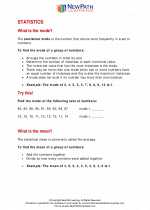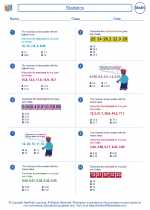Solution
In mathematics, a solution is a value or set of values that satisfy an equation or inequality. When we solve an equation or inequality, we are finding the solutions that make the equation or inequality true.
Types of Solutions
There are different types of solutions depending on the type of equation or inequality:
- One Solution: An equation or inequality may have one specific value that satisfies it. This is known as a single solution.
- No Solution: In some cases, an equation or inequality may have no value that satisfies it. This means there is no solution.
- Infinite Solutions: Certain equations or inequalities have an infinite number of values that satisfy them. These are known as equations with infinite solutions.
How to Find Solutions
To find solutions, we often use different methods such as:
- Algebraic Methods: This involves manipulating the equation or inequality using algebraic techniques such as adding, subtracting, multiplying, or dividing to isolate the variable and find the solution.
- Graphical Methods: Graphing an equation or inequality on a coordinate plane can help visualize the solutions as the points where the graph intersects the axes or other lines.
- Numerical Methods: Using numerical techniques such as trial and error, or using calculators or computer software to approximate solutions.
Study Guide
To study solutions, it's important to understand the following concepts:
- Understanding the difference between equations and inequalities.
- Identifying the different types of solutions - one solution, no solution, or infinite solutions.
- Practicing various methods for finding solutions, including algebraic, graphical, and numerical approaches.
- Applying the concept of solutions to real-life problems and word problems.
Remember to practice solving different types of equations and inequalities to strengthen your understanding of solutions.
[Solution] Related Worksheets and Study Guides:
.◂Math Worksheets and Study Guides Fifth Grade. Statistics
Study Guide Statistics
Statistics  Worksheet/Answer key
Worksheet/Answer key Statistics
Statistics  Worksheet/Answer key
Worksheet/Answer key Statistics
Statistics  Worksheet/Answer key
Worksheet/Answer key Statistics
Statistics 

 Worksheet/Answer key
Worksheet/Answer key
 Worksheet/Answer key
Worksheet/Answer key
 Worksheet/Answer key
Worksheet/Answer key

The resources above cover the following skills:
Data Analysis and Probability (NCTM)
Select and use appropriate statistical methods to analyze data.
Use measures of center, focusing on the median, and understand what each does and does not indicate about the data set.